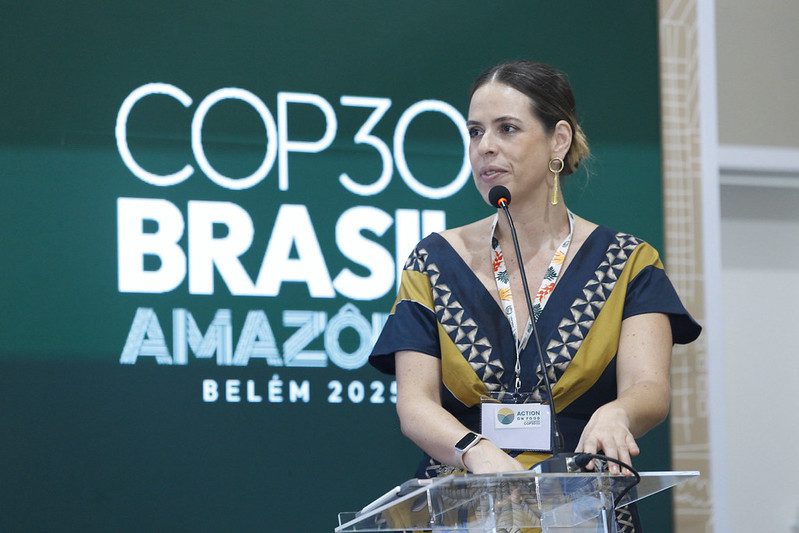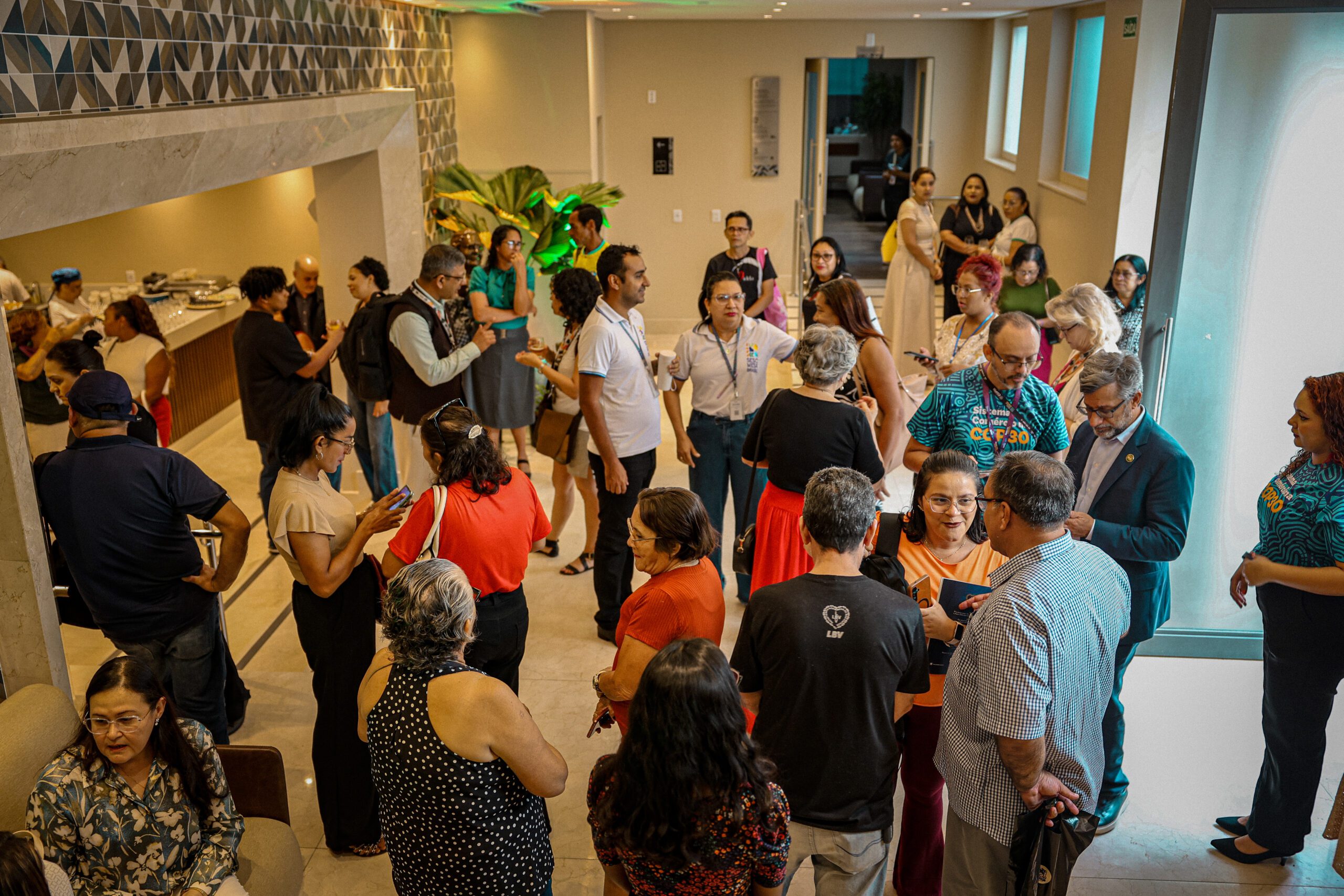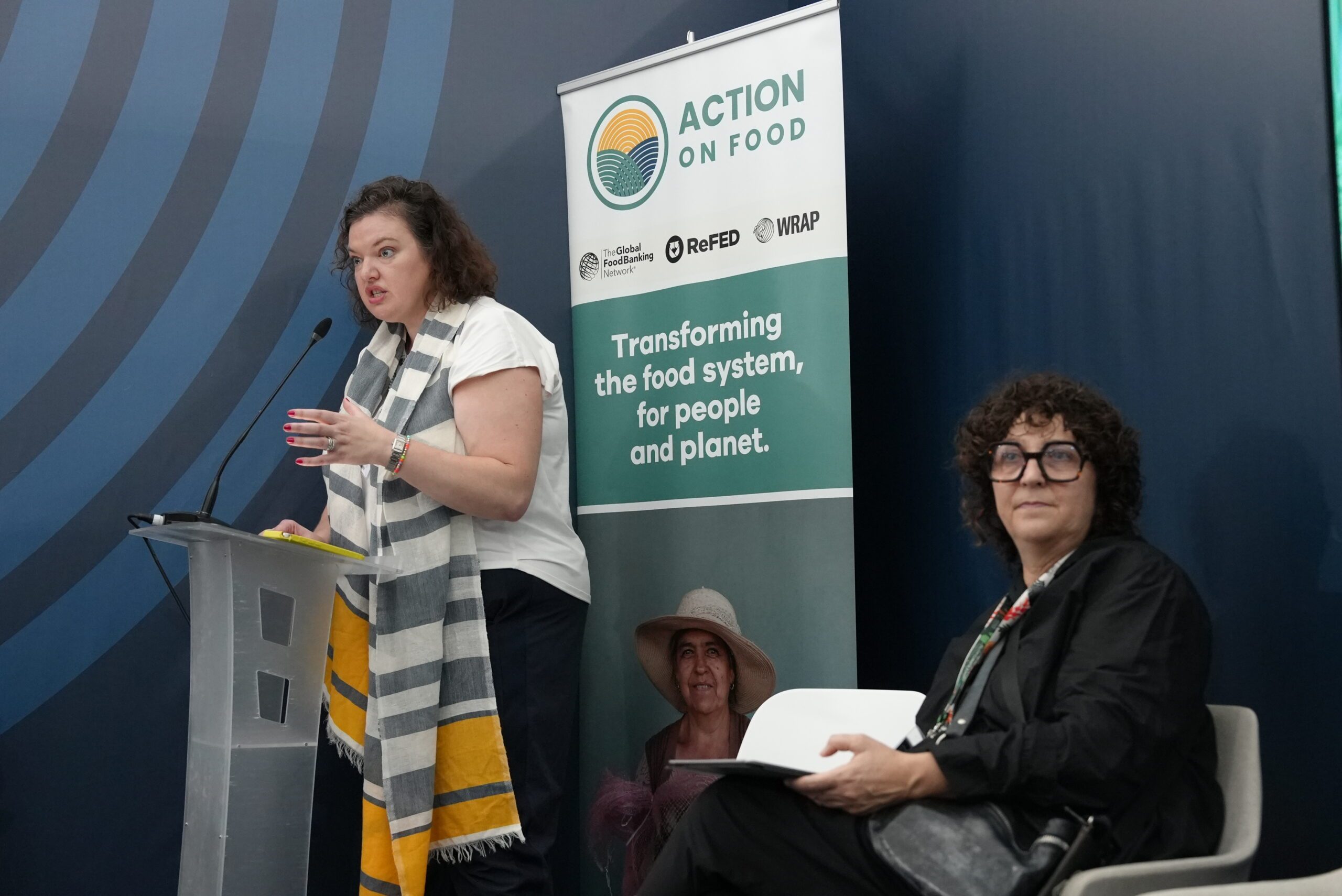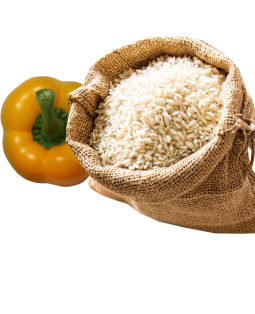The annual U.N. climate conference, COP30, felt different this year. This COP was held in Belém, Brazil, a city at the gateway of the Amazon, one of the world’s great symbols of nature and biodiversity. The event came at a time of deep geopolitical division and questions about the role of multilateralism itself. And, it was a conference that was never intended to deliver major breakthroughs, as most of the focus was on how countries would update their national commitments, known as NDCs, which were to be announced ahead of the COP.
Despite all of this, the venue itself was bustling, drawing in some 50,000 people — a remarkable number, especially at a time of so many competing priorities for people, companies and governments.
The Global FoodBanking Network (GFN) has been participating in these global conferences over the last four years, with a goal of elevating the food banking model and advancing it as an accepted solution that benefits people and the environment, the latter mainly through mitigating food loss and waste. We hosted sessions (with thanks to partners WRAP, ReFED, SDSN, Global Methane Hub and many others), collaborated with partners and worked to inject food banking into some of the formal mechanisms to spur progress and unlock resources. In particular, GFN’s FRAME 방법론, which provides a rigorous process to measure the effects of food recovery and redistribution on emissions and other impacts, has been central to these efforts.




Against this backdrop, how did COP30 fare? Where did we see progress on food systems transformation, including food loss and waste?
In my view, while there weren’t huge headlines around food systems, we did see clear signs of progress to advance this agenda. Here are my three main takeaways:
1. National commitments. Prior to the COP, a lot of attention was focused on national commitments, known as NDCs, which fall under the Paris Agreement. Heading into the COP, approximately 30 countries included food loss and waste mitigation in their NDCs, according to analysis from WRAP. While this is a modest number, it reflects positive progress. Of these, for the first time, a handful of countries included specific references to food banking as a climate solution. These national commitments are important because they reflect the country’s official stance, and they can unlock finances, which are needed to achieve the goals.
2. The Action Agenda. Many people referred to COP30 as the “implementation COP” — a time to move from commitments to action. That idea was most clearly reflected in what is known as the Action Agenda — a structure developed by the COP Presidency and the Climate Champions to align real world action with the official COP agenda. The Agenda is organized across six axes, one of which (Axis 3) focuses on agriculture and food systems transformation.
One of the plans under Axis 3 specifically focuses on food loss and waste. The plan was developed by GFN, together with WRAP, ReFED, Champions 12.3, WRI, SDSN and others, and it sets out a bold vision of action that, if fully implemented, would provide food to millions of people while significantly cutting food loss and waste. Another plan, under Axis 4, was developed by UNEP, with ICLEI-Local Governments for Sustainability and GFN, focuses on reducing food waste by spurring consumer behavior change, public-private partnerships, circular food systems and food waste deterrence policies to catalyze action. These efforts — and many others — aim to accelerate real world action beyond COP.
3. Linking Issues. One of the interesting aspects of food banking is that it connects to many other social and environmental issues. That’s why we often say that food banking is about “more than food.” Food banks first and foremost aim to alleviate hunger and strengthen food security. But food banking also brings other benefits, such as reducing waste and emissions, especially around methane, as well as other environmental, nutritional and social benefits. Food banks also support and strengthen communities, which is important, especially at a time of growing climate-driven disasters around the world.
Through these interconnections, GFN has been able to engage with other groups and organizations, such as the newly formed Super Pollutants Action Alliance, the Lowering Organic Waste (LOW) Methane group, the No Organic Waste Initiative, the Climate and Clean Air Coalition (CCAC) and others. These collaborations present opportunities for GFN and our partners to find new avenues to advance our collective work.
Like all COPs, this one was not perfect. The heat was oppressive, and the daily downpours were a powerful reminder of the changing planet. An electrical fire even broke out, temporarily halting the action. Yet, despite all of this, I found there was a remarkable level of positivity and collegiality in the hallways. Throughout the week, I got to spend time with current partners, colleagues that I have known for many years and people that I met for the first time. I connected with representatives from startups to major food companies and youth advocates to cattle farmers. While good conversations aren’t enough, I believe they can be energizing, spurring deeper collaboration and, at their best, inspiring action. Like always, the hard work remains ahead, but I hope that we can harness this spirit as we work to push toward a more secure and healthier future.



